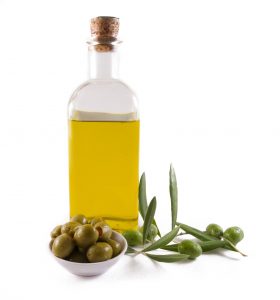 One of my favorite responsibilities here is working with our recipes (especially the taste testing). Our recipes meet specific criteria before getting the “From the AICR Test Kitchen” stamp. You may have noticed on our recipes and other materials that we often specify low fat, fat free or reduced-fat for ingredients such as dairy products or salad dressing.
One of my favorite responsibilities here is working with our recipes (especially the taste testing). Our recipes meet specific criteria before getting the “From the AICR Test Kitchen” stamp. You may have noticed on our recipes and other materials that we often specify low fat, fat free or reduced-fat for ingredients such as dairy products or salad dressing.
February being Heart Health Month, you’re likely to be reading a lot about “healthy” and “unhealthy” fats in the coming days. So it’s a good opportunity to explain our rationale for specifying certain types of reduced- or non-fat foods.
- What is the link between dietary fats and cancer risk? The AICR/WCRF expert report and its updates has not found a strong link between total dietary fat and cancer risk. But there is a link between foods with a lot of calories per bite – most of which are high fat – and weight gain, overweight and obesity, a risk factor for seven types of cancer.
- Do you use high fat foods in some recipes? Our recipe guidelines call for fats to be naturally occurring in foods or, if added, to be primarily vegetable oils. Because AICR’s recommendations for cancer prevention and survivorship also take into account recommendations for reducing risk of other chronic diseases, such as heart disease, we also promote heart healthy choices such as olive oil or avocados.
- Why do you sometimes use reduced fat versions of naturally high fat foods? Our primary goal is to keep calories in our recipes appropriate for their category, whether entrée, side or dessert. Reduced fat items can significantly lower calories in some dishes without negatively affecting flavor and texture. We strive for low to moderate calorie dishes that are tasty and nutritionally rich.
The terms describing fats on labels can be confusing – here are some definitions:
Low-fat: No more than 3 g fat per serving (1% milk is low-fat)
Fat-free: Less than 0.5 g total fat per serving (non-fat milk is fat-free)
Reduced-fat: Food contains at least 25% less of the fat than is contained in the original product (2% milk is reduced-fat)
Our recipes: From the AICR Test Kitchen and Health-e-Recipe (sign up to receive them in your email every Tuesday).





